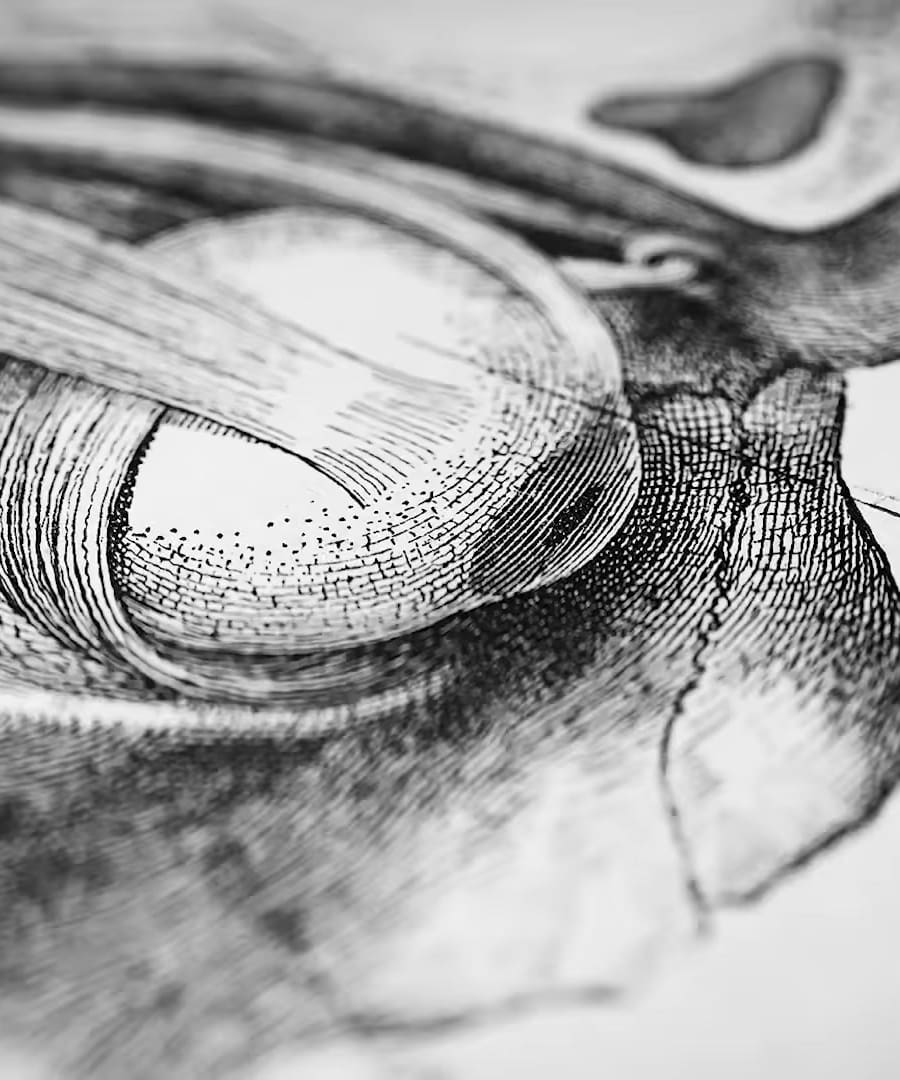After a run, in-terms of hygiene, health, and most importantly dopamine increases, would it be better to have a hot shower wash before or after a 3 minute ice bath?
Sources:
For enhancing dopamine, metabolism, and overall health benefits, an ice bath is highly recommended due to its significant, sustained increase in dopamine levels. A 2.5x increase in dopamine, which can last for hours, is observed with cold water exposure of 1-3 minutes 1 2 3.
In terms of health benefits, cold exposure has been shown to increase metabolism, brown fat stores, resilience, and reduce inflammation 2 4. Using cold exposure before bedtime might not be ideal since it can be quite stimulating, thus better done earlier in the day 3.
If you decide to enjoy both a hot shower and an ice bath post-run, combining them can have an uplifting, euphoric effect. In cultures like Finland, transitioning between hot saunas and cold baths is a common practice and is reported to enhance mood and aid in resetting circadian rhythms 5.
However, whether you should take a hot shower before or after an ice bath specifically for dopamine is not explicitly detailed. Given cold exposure's robust mechanism for dopamine increase, it might be more beneficial to take the ice bath first to achieve the neurotransmitter release, followed by a hot shower to help your body warm up and potentially synergize with the benefits of cold exposure.
Recommended Order:
- Run
- Ice Bath (1-3 mins) to boost dopamine and enhance metabolism
- Hot Shower to warm up and extend overall relaxation.
Always listen to your body and consult a healthcare professional to tailor specific practices to your health needs and tolerance levels.
RELATED QUESTIONSCan ice baths help someone with addiction who is abstaining/rebooting to desensitise their dopamine response to their addictive stimulus, or increase their dopamine receptivity, or re-sensitise to everyday life and become more motivated?
Sources:
Cold exposure through ice baths can indeed help manage dopamine levels and may support individuals with addiction during the recovery process.
Effects on Dopamine and Addiction
Elevated Dopamine Baseline: Ice baths can robustly increase dopamine levels by 2.5 times the baseline, which is substantial and long-lasting. This rise in dopamine can improve mood and provide sustained focus and motivation without the need for pharmacological intervention 1 2.
Resensitizing Dopamine Pathways: Cold exposure naturally stimulates dopamine release, potentially aiding in re-sensitizing dopamine receptors that may have become desensitized due to addictive behaviors. Deliberate cold exposure has been shown to promote dopamine receptor efficacy, especially when combined with caffeine to enhance receptor density and effectiveness 3.
Mental and Physical Resilience
Motivation and Mood Improvement: Regular exposure to cold can increase resilience and enhance mental toughness. Users frequently report heightened levels of calm, focus, and overall well-being after cold exposure, which may help counter the motivational deficits often seen during addiction recovery 4 5.
Natural Energy Boost: The release of norepinephrine and dopamine from cold exposure provides a powerful energy boost, often comparable to that from stimulants but without the negative side effects, effectively offering a healthier alternative for those recovering from addictive substances 5 6.
Usage in Recovery: Dr. Anna Lembke, a colleague of and an expert on addiction, has discussed how patients successfully use deliberate cold exposure to maintain dopamine levels during recovery from drug addiction. This approach leverages the natural benefits of cold exposure to support sobriety and offer a healthier method of dopamine release 7 8.
In conclusion, ice baths are a promising tool for increasing dopamine, enhancing motivation, and promoting overall mental health, which can be particularly beneficial for those in addiction recovery. Regular, safe cold exposure could help re-adjust the brain's dopamine system, fostering resilience and a greater sense of well-being.
RELATED QUESTIONSCan one and if so, what can one do to re-sensitise their dopamine receptors, particularly those who have had an addiction which has desensitised and turned off receptors (to my understanding)
Sources:
Resensitizing dopamine receptors following addiction involves a multifaceted approach that combines biological, psychological, and behavioral strategies. Here are key methods highlighted by trusted experts:
Methods to Resensitize Dopamine Receptors
-
Dopamine Fasting: Allowing the brain to reset its dopamine levels by abstaining from high-stimulation activities and substances. This process helps restore the brain's natural reward pathways 1.
-
Cold Exposure: Regular use of cold exposure, like ice baths, can significantly increase baseline dopamine levels and help re-sensitize dopamine pathways. It promotes natural dopamine release and enhances mental resilience 2 3.
-
Exercise: Engaging in regular physical activity can speed up the healing of dopamine receptors by naturally increasing dopamine levels. It's particularly effective during the first weeks of recovery to combat cravings and support the re-establishment of healthy dopamine responses 4.
-
Healthy Diet: Transitioning to a nutrient-dense, balanced diet can also aid dopamine receptor resensitization. Avoiding high-calorie, dopamine-triggering foods and focusing on healthy choices helps regain normal dopamine sensitivity. As per , 80% of dopamine sensitivity can be regained within the first two weeks of making healthier choices 5.
-
Time and Patience: The brain needs time to heal and re-regulate its dopamine system. It takes about 30 days for the brain's dopamine circuitry to reset after the cessation of addictive behaviors, involving a period of discomfort and cravings 6.
-
Behavioral Interventions and Support: Establishing new routines and environments that support healthy behaviors is crucial. This can include joining support groups, building new social circles, and engaging in activities that provide natural rewards and satisfaction 4 1.
Insights from Experts
- Dr. Andrew Huberman explains that a 30-day period of complete abstinence is often necessary for the reset process. He emphasizes using "binding behaviors," which involve controlling and scheduling engagements with pleasurable activities to train the brain's prefrontal cortex 6.
- Dr. Jennifer Heisz underscores the role of exercise in speeding up brain recovery and providing a new social support system for those in addiction recovery 4.
- Dr. Anna Lembke advocates for seeking challenging experiences and avoiding intoxicants to reset healthy dopamine levels and counteract the chronic dopamine deficit state caused by addiction 7.
Combining these approaches can help individuals recovering from addiction to resensitize their dopamine receptors, regain motivation, and find pleasure in everyday life again.
RELATED QUESTIONS-
How does one do this: Deliberate cold exposure has been shown to promote dopamine receptor efficacy, especially when combined with caffeine to enhance receptor density and effectiveness.
Sources:
Combining Cold Exposure with Caffeine to Enhance Dopamine Receptor Efficacy
Andrew Huberman, a neuroscientist, explains that deliberate cold exposure can significantly elevate dopamine levels in the brain and body, providing substantial boosts in mood, energy, and focus. When you combine cold exposure with caffeine, it can further enhance dopamine receptor efficacy. Here’s how:
-
Caffeine Ingestion: Ingesting caffeine (about 300 mg, equivalent to 2-3 cups of coffee) 60 to 120 minutes before cold exposure increases the density and efficacy of dopamine D2 and D3 receptors in the brain, particularly in the striatum. The striatum is crucial for planning, action, and behavioral regulation 1.
-
Mechanism and Benefits: Cold exposure alone boosts dopamine levels by up to 250% and this increase can last for hours after the exposure ends. When caffeine is ingested beforehand, it allows the elevated dopamine to effectively bind to the now more abundant receptors, maximizing its impact on mood, motivation, and focus 1 2.
-
Combined Protocol: To implement this effectively:
- Consume caffeine 60 to 120 minutes before cold exposure.
- Engage in deliberate cold exposure, such as a cold shower or an ice bath.
- This combination can be enhanced by undertaking the protocol in a fasted state, which further increases norepinephrine release, compounding the effects on dopamine 1.
By following these steps, individuals can harness the synergistic effects of cold exposure and caffeine to significantly improve dopamine receptor density and function, contributing to better mental performance and mood stabilization.
RELATED QUESTIONS-
Would the enhancement of dopamine density and dopamine receptor efficacy last after doing this or does this need to be done regularly?
Sources:
Duration and Persistence of Dopamine Enhancement from Cold Exposure and Caffeine
The combination of cold exposure and caffeine does boost dopamine receptor density and effectiveness, but maintaining these elevated levels of dopamine and receptor efficacy likely requires regular practice. Andrew Huberman discusses that while deliberate cold exposure can significantly boost dopamine levels and receptor efficacy, the effects, particularly when combined with caffeine, don't appear to be permanent. Consistent and regular practice is necessary to keep these benefits ongoing 1.
These practices include:
- Regular Cold Exposure: Engaging in cold showers or ice baths regularly can sustain elevated dopamine levels 1 2.
- Caffeine Protocols: Using caffeine before cold exposure amplifies these effects, but to maintain the enhanced receptor density and effectiveness, one would need to keep repeating this combined protocol regularly 1.
In conclusion, while each session's effects can last several hours, long-term persistence of these benefits necessitates regular repetition of the protocols.
RELATED QUESTIONSIs there a suggested frequency? And is there anything known about how to do this safely and limit any negative consequences, if any?
Enhancing dopamine density and receptor efficacy through cold exposure and caffeine should be done with attention to both frequency and safety.
Suggested Frequency
While there's no universally mandated frequency, Andrew Huberman often discusses the benefit of regular, rather than sporadic, cold exposure. Engaging in cold exposure sessions around 2-4 times a week can help maintain the enhancements in dopamine levels and receptor efficacy 1.
Safety Considerations
Andrew Huberman emphasizes the importance of gradual adaptation and monitoring physiological responses to avoid negative consequences. Key safety guidelines include:
- Gradual Introduction: Start with brief, less intense cold exposures and gradually increase duration and intensity.
- Caffeine Dosing: Be moderate with caffeine intake, avoiding excessive amounts which can lead to jitters or other side effects.
- Physical Health Considerations: Those with cardiovascular conditions or other health issues should consult a healthcare provider before beginning cold exposure protocols.
By following these guidelines, one can maximize benefits and minimize risks from these protocols. Always listen to your body and adjust based on personal tolerance and health conditions 1 2.
RELATED QUESTIONSIn order not to stack dopamine, how long after a 30 minute moderate intensity run would one need to wait before ingesting caffeine?
Sources:
Andrew Huberman advises caution around dopamine stacking and suggests waiting before consuming caffeine post-exercise to avoid negative consequences.
Key Points from Andrew Huberman
- Dopamine Stacking: Combining stimulants like caffeine with exercise can lead to a temporary dopamine spike, followed by a potential drop below baseline 1.
- Waiting Period: After an intense workout, Huberman recommends waiting and monitoring how you feel before consuming caffeine. If experiencing a low mood eight hours later or the following day, avoid repeating the same stimulant combination immediately.
To prevent dopamine stacking and allow your baseline dopamine levels to stabilize, you should wait at least several hours post-exercise before consuming caffeine 1. Always pay attention to your body's signals and adjust based on individual needs.
RELATED QUESTIONSIf I wanted to do the caffeine and cold exposure protocol, but I wanted to run before my cold exposure, could I ingest caffeine a couple hours before the cold bath, so my run, and then get in the ice bath and would the cold exposure nulify the negative effects of dopamine stacking or not?
Sources:
Andrew Huberman discusses the potential synergy between caffeine and deliberate cold exposure to enhance dopamine levels, which might offer a strategy for addressing your question.
Key Points for Your Scenario:
- Caffeine Pre-Exposure: Huberman suggests ingesting caffeine 60 to 120 minutes before deliberate cold exposure to increase dopamine levels more significantly. This timing allows caffeine to increase the density and efficacy of dopamine receptors, amplifying their effect during the cold exposure 1.
- Cold Exposure Benefits: Deliberate cold exposure itself is a potent tool for boosting dopamine and epinephrine levels, leading to sustained increases in alertness and focus 2 3.
Proposed Protocol:
- Caffeine Intake: Consume caffeine 1 to 2 hours before your run.
- Moderate Intensity Run: Complete your 30-minute run.
- Cold Exposure: Following the run, engage in deliberate cold exposure (ice bath or cold shower).
This approach should harness the benefits of both caffeine and cold exposure while allowing your body time to manage dopamine levels effectively. Remember to monitor your body's response and adjust accordingly for optimal safety and results.
RELATED QUESTIONSWould an ice bath nullify the effects of dopamine stacking by having caffeine before a run or resistance training, if I followed that with an ice bath?
Sources:
Andrew Huberman suggests that deliberate cold exposure taken after ingesting caffeine can potentially enhance the dopamine response rather than nullify it. Combining caffeine and cold exposure increases the density and efficacy of dopamine receptors, amplifying dopamine's effects in the brain.
Key Points:
- Caffeine Timing: Ingest caffeine 60-120 minutes before your workout to boost dopamine receptor efficacy 1.
- Cold Exposure Benefits: Cold exposure significantly increases dopamine and norepinephrine levels, enhancing alertness and mood 2 3.
Incorporating caffeine before exercise, followed by cold exposure, should not nullify the dopamine effects but instead optimize them for sustained benefits. Thus, an ice bath post-exercise would enhance rather than negate the dopamine response from your protocol.
RELATED QUESTIONSWould an ice bath nullify the negative effects of dopamine stacking by having caffeine before a run or resistance training, if I followed that with an ice bath?
Sources:
Andrew Huberman explains that cold exposure can shift the entire brain and body's environment, enhancing calm and focus due to the substantial rise in dopamine levels. He notes that the long-lasting increase in dopamine from cold water exposure is beneficial and not typically addictive, seeming to promote health rather than detract from it 1 2.
Key Points:
- Cold Exposure Benefits: Increases dopamine, norepinephrine, and other neurotransmitters, leading to improved mood and focus 1 2.
- Negative Effects Mitigation: Cold exposure appears to raise the baseline of dopamine without the detrimental effects seen in other dopamine-enhancing methods 1.
Cold water immersion helps counteract stress hormones like cortisol and fosters a calmer state post-exposure 1. It suggests that an ice bath after caffeine and exercise would likely enhance overall benefits rather than nullify any potential negative effects of dopamine stacking.
RELATED QUESTIONSWould the caffeine and cold exposure protocol help someone recovering from the negative effects of addiction on one’s brain, especially for the neurochemcial dopamine?
Sources:
Andrew Huberman suggests that deliberate cold exposure, such as ice baths, can significantly boost dopamine levels in a healthy, long-lasting manner, providing a 2.5x increase without the addictive qualities of other dopamine-inducing activities 1. He mentions that this approach has been used successfully by individuals recovering from addiction, like one of his colleagues' patients dealing with cocaine addiction, who used ice baths to manage dopamine levels healthily 2 3.
Caffeine and Cold Exposure Protocol:
- Caffeine: Ingesting caffeine 60-120 minutes before cold exposure can increase the density and efficacy of dopamine receptors in the brain, enhancing dopamine's effects 4.
- Cold Exposure: Engaging in deliberate cold exposure, whether through ice baths or cold showers, significantly boosts dopamine and norepinephrine, supporting mood and focus.
This combination might assist in recovering from addiction's neurological effects by providing sustained dopamine increases and adding a motivational boost. However, Dr. Huberman emphasizes approaching these protocols with caution, considering each individual's health and consulting healthcare professionals when necessary.
For those recovering from addiction, implementing this protocol could be beneficial for stabilizing mood and motivation by leveraging natural dopamine increases as an alternative to harmful, addictive behaviors.
RELATED QUESTIONSIn order to not dopamine stack and dimish dopamine sensitivity, should one wait before ingesting caffeine after cold exposure and if so, how long?
Sources:
Andrew Huberman advises that to avoid dopamine stacking and diminishing dopamine sensitivity, it is best to wait at least 30 minutes after cold exposure before ingesting caffeine. This waiting period helps ensure that the natural dopamine release from the cold exposure has its effect before being further augmented by caffeine, which helps maintain dopamine receptor sensitivity and prevents overstimulation 1.
RELATED QUESTIONS











